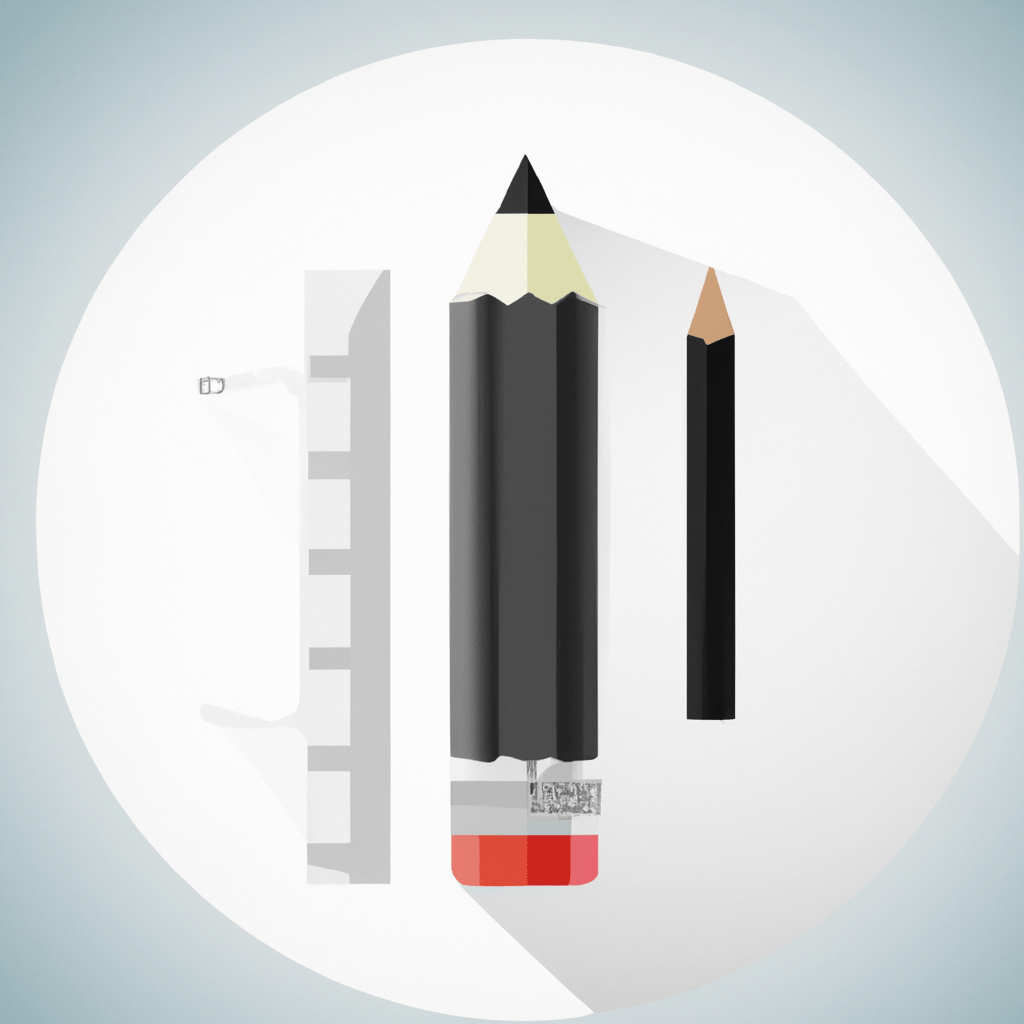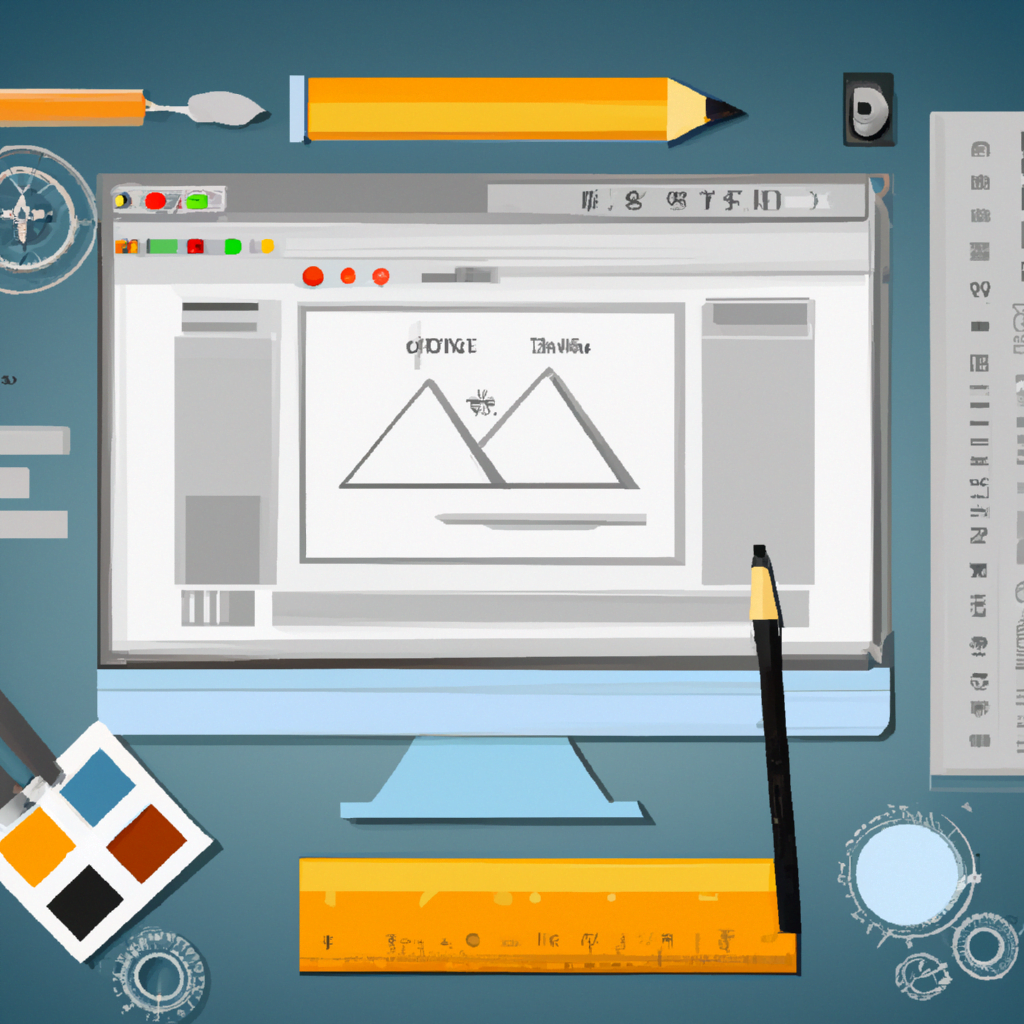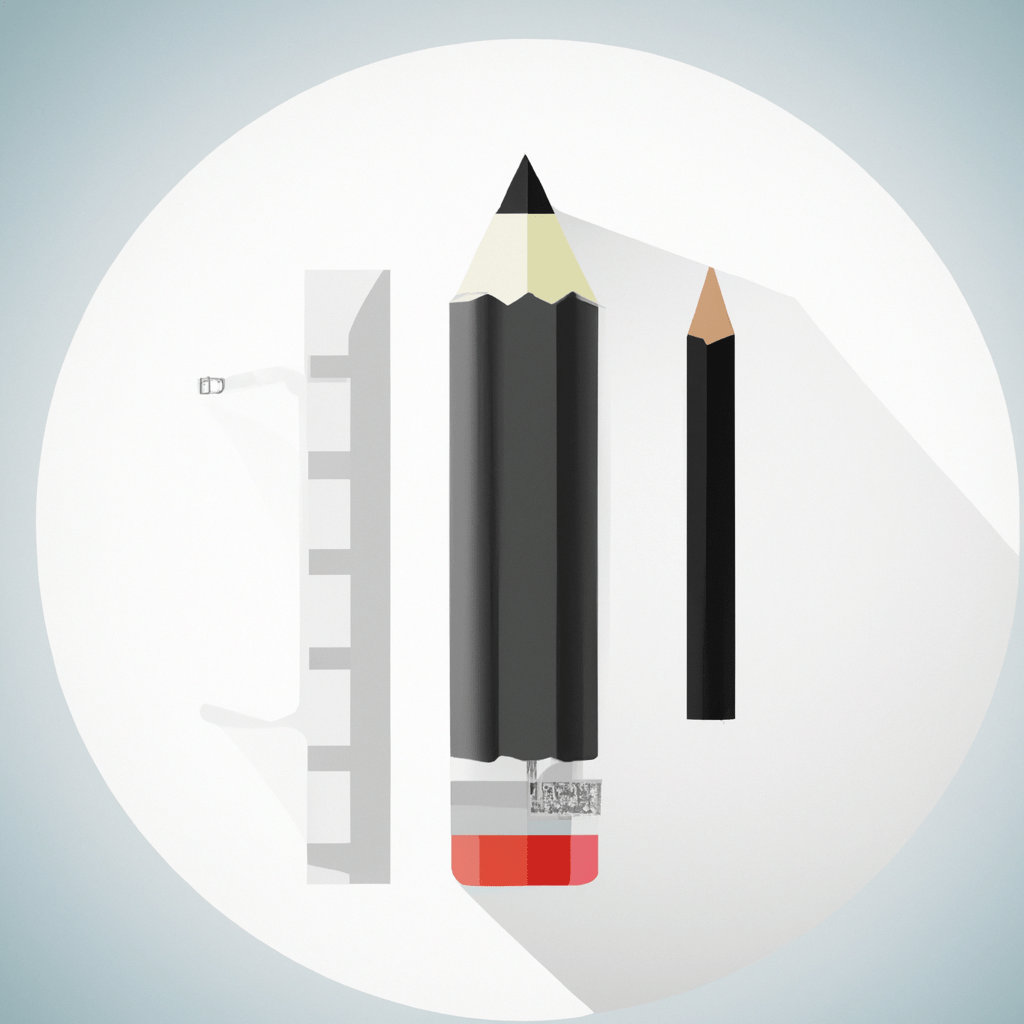In the world of design, creating vector graphics is an essential skill for any aspiring artist. Whether you’re a graphic designer, illustrator, or just someone with a love for art, knowing how to create vector graphics in Illustrator can take your work to the next level. Vector graphics offer the advantage of scalability, meaning they can be resized without losing any quality or detail. This makes them perfect for a variety of applications, from logos and icons to digital illustrations and print designs. In this article, we will explore the step-by-step process of creating vector graphics in Illustrator, from setting up your workspace to mastering the powerful tools and techniques at your disposal. So grab your drawing tablet and let’s dive into the exciting world of vector art in Illustrator!

Choosing the Right Tools
When it comes to creating vector graphics, one of the first decisions you’ll need to make is which software to use. Two primary types of graphics software are raster and vector. Raster graphics are made up of pixels and are typically used for photographs and images with complex details. On the other hand, vector graphics are made up of scalable paths and points, allowing them to be resized without losing quality. So why should you choose Illustrator for creating vector graphics?
Understanding the Difference Between Vector and Raster Graphics
While both raster and vector graphics have their uses, vector graphics offer a number of advantages when it comes to creating illustrations. The scalability and flexibility of vector graphics make them ideal for projects where precision and clarity are essential. Whether you’re creating a logo, a digital illustration, or a graphic for print, working with vectors ensures that your designs will look crisp and professional at any size.
Why Illustrator is the Best Software for Creating Vector Graphics
Of all the available software options, Illustrator stands out as the top choice for creating vector graphics. Developed by Adobe, Illustrator provides a comprehensive set of tools and features that make it the industry standard for professional designers. Its intuitive interface and powerful functionality make it easy for both beginners and experienced artists to create stunning vector illustrations.
One of the key advantages of Illustrator is its ability to create and manipulate paths and anchor points, which form the foundation of any vector graphic. Illustrator’s precise control over paths allows you to create intricate, complex shapes with ease. Additionally, Illustrator offers a wide range of tools for applying colors, gradients, and effects to your artwork, giving you endless creative possibilities. With its robust typography tools, you can also easily incorporate text into your vector graphics, allowing for seamless integration of design and messaging.
Setting up Your Workspace
Once you’ve chosen Illustrator as your software of choice, it’s time to set up your workspace for creating vector graphics. Customizing the Illustrator workspace to suit your specific needs will enhance your efficiency and workflow. Here are the steps to get started:
Opening Illustrator and Creating a New Document
To begin, open Illustrator and select “New Document” from the File menu. Here, you can specify the dimensions and resolution for your artwork. For most projects, it’s recommended to set the units to pixels, unless you’re designing for print with specific print dimensions and resolutions in mind. Once you’ve set up your document, click “Create” to proceed.
Customizing the Workspace for Vector Graphic Creation
Upon opening a new document, you’ll be presented with the Illustrator workspace. This workspace includes various panels and tools that you can rearrange and customize to suit your preferences. To optimize your workspace for vector graphic creation, it’s helpful to have the essential panels readily accessible.
Some key panels to consider including are:
The Tools panel: This panel contains all the tools you’ll use to create and manipulate objects in Illustrator. It’s recommended to keep this panel visible to easily access the tools you need.
The Color panel: This panel allows you to select and apply colors to your artwork. Having it open will enable you to quickly experiment with different color options.
The Layers panel: The Layers panel helps you organize your artwork by separating elements into different layers. This makes it easier to edit individual components of your vector graphic.
You can customize your workspace by clicking on the Window menu and selecting the panels you want to add or remove. You can also drag and drop panels to rearrange their positions to create a workspace layout that suits your workflow.
Understanding Paths and Shapes
Paths and shapes are the building blocks of vector graphics. Understanding how to work with paths and anchor points will give you the foundation you need to create intricate designs. In Illustrator, paths are made up of straight and curved lines that are defined by anchor points. Here’s an introduction to paths and anchor points:
Introduction to Paths and Anchor Points
Paths are formed by connecting anchor points using straight or curved lines. Anchor points are the points that define the shape of a path. By manipulating anchor points, you can adjust the shape and direction of a path. When you select a path in Illustrator, you’ll see the anchor points and path segments displayed, giving you visual control over the structure of your design.
Drawing Straight Lines and Curves
Illustrator provides several tools for creating straight lines and curves. The Pen tool, for example, allows you to manually draw paths by placing anchor points and adjusting their handles. Alternatively, you can use the Line tool, Rectangle tool, or Ellipse tool to create basic shapes. These tools generate paths automatically, allowing you to focus on refining and customizing your designs.
Creating Basic Shapes
In addition to drawing paths, Illustrator offers a range of shape tools that make it easy to create basic geometric shapes. Simply select the desired shape tool, such as the Rectangle tool or the Ellipse tool, and click and drag on the canvas to define the size and proportions of the shape. You can further customize these shapes by adjusting their anchor points and path segments.

Working with Fill and Stroke
Fill and stroke are essential elements when it comes to adding color and defining the appearance of your vector graphics. Understanding how to apply colors, gradients, and adjust stroke width and style will allow you to create visually appealing designs. Here’s how you can work with fill and stroke in Illustrator:
Applying Colors and Gradients to Objects
To apply colors or gradients to your objects, select the object or objects you want to modify and navigate to the Color panel. This panel allows you to choose colors from swatches, create custom color palettes, and apply gradients to objects. Experimenting with different color combinations and gradients can help bring depth and visual interest to your vector graphics.
Adjusting Stroke Width and Style
The stroke of an object refers to its outline or border. Illustrator provides various options for adjusting stroke width, style, and color. To modify the stroke attributes of an object, select the object and navigate to the Stroke panel. Here, you can increase or decrease the stroke width, choose different stroke styles, such as dashed or dotted lines, and even apply gradients to strokes. Adjusting the stroke attributes can help emphasize certain elements of your design and give your artwork a polished look.
Using the Pen Tool
The Pen tool is one of the most powerful and versatile tools in Illustrator. Mastering the Pen tool will give you precise control over path creation, allowing you to create complex and intricate shapes. Here’s how you can utilize the Pen tool effectively:
Mastering the Pen Tool for Precise Path Creation
The Pen tool allows you to create paths by placing anchor points and adjusting their handles. To create a straight line segment, simply click on the canvas to place an anchor point. To create a curved segment, click and drag to create direction handles, which determine the curvature of the path. By combining straight and curved segments, you can create intricate shapes and designs with exceptional precision.
Creating Complex Shapes with Bezier Curves
Bezier curves are mathematical algorithms that describe smooth curves. Illustrator’s Pen tool utilizes Bezier curves to create paths. By manipulating the anchor points and handles of a path, you can control the curvature and shape of the path. Understanding how to create and adjust Bezier curves is essential for creating complex shapes, such as irregular curves, spirals, and letterforms.
Utilizing the Shape Builder Tool
The Shape Builder tool in Illustrator offers a quick and intuitive way to combine and divide shapes, allowing you to create custom shapes with ease. Here’s how you can utilize the Shape Builder tool effectively:
Combining and Dividing Shapes
To combine multiple shapes into one, select the shapes you want to combine and select the Shape Builder tool. Click and drag across the shapes to create a new shape that encompasses the selected areas. To divide a shape into separate sections, select the shape and the Shape Builder tool, and click and drag across the desired sections. The Shape Builder tool provides a seamless way to experiment with different shape combinations and create unique designs.
Creating Custom Shapes
The Shape Builder tool also allows you to create custom shapes by merging and subtracting areas from existing shapes. By combining and subtracting different shapes, you can create organic shapes, intricate patterns, and unique compositions. This tool opens up a world of creative possibilities, enabling you to push the boundaries of your vector graphic creations.
Working with Typography
Typography plays a crucial role in graphic design, allowing you to incorporate text seamlessly into your vector graphics. Illustrator offers a range of tools and features for adding and formatting text. Here’s how you can work with typography in Illustrator:
Adding Text to Your Vector Graphics
To add text to your vector graphic, select the Type tool from the Tools panel and click on the canvas. This creates a text area where you can begin typing. Illustrator’s Type tool offers various formatting options, such as font selection, size adjustments, and alignment. You can also apply different text effects, like drop shadows or outlines, to enhance the visual impact of your text.
Formatting and Editing Text
Once you’ve added text to your vector graphic, you can further customize its appearance and formatting. Illustrator provides numerous options for adjusting fonts, sizes, colors, and spacing. You can also manipulate individual characters or entire paragraphs to create unique typographic compositions. By experimenting with different fonts, styles, and text layouts, you can effectively convey your message and enhance the overall visual appeal of your vector graphics.
Applying Effects and Styles
Effects and styles are powerful tools in Illustrator that allow you to enhance the appearance of your vector graphics. Whether you want to add shadows, highlights, blurs, or apply graphic styles for consistency, Illustrator offers a wide range of options. Here’s how you can apply effects and styles to your vector graphics:
Adding Shadows, Highlights, and Blurs
To add visual depth and dimension to your vector graphics, you can apply shadows, highlights, and blurs. Illustrator provides built-in effects, such as Drop Shadow, Inner Glow, and Gaussian Blur, that allow you to easily achieve these effects. By adjusting the settings of these effects, you can control the intensity, direction, and spread to create the desired visual impact.
Using Graphic Styles for Consistency
Graphic styles in Illustrator enable you to apply a collection of appearance attributes to objects, providing consistency and continuity throughout your vector graphics. By defining and saving custom graphic styles, you can easily apply them to different objects, ensuring a cohesive and professional look. Graphic styles can include stroke and fill attributes, effects, and even text formatting, allowing you to quickly and efficiently apply complex styles to your artwork.
Organizing and Editing Layers
Layers play a crucial role in organizing and managing complex vector graphics. Illustrator’s Layer panel allows you to separate elements into different layers, making it easier to edit and manage individual components. Here’s how you can organize and edit layers effectively:
Understanding the Layer Panel
The Layer panel in Illustrator displays all the layers within your document. Each layer can contain one or more objects, which can be rearranged and nested to create a hierarchical structure. By organizing elements into layers, you can easily hide or lock specific layers, making it easier to focus on specific parts of your vector graphic. The Layer panel also allows you to adjust the stacking order of objects, ensuring that certain elements are displayed in front or behind others.
Grouping and Locking Objects
To further organize your vector graphic, you can group related objects together. Grouping allows you to treat multiple objects as a single entity, making it easier to move, rotate, or scale them collectively. You can also lock objects to prevent unintentional modifications. This is particularly useful when you’re working with complex designs and want to avoid accidentally selecting and modifying objects that are already in their desired position.
Arranging and Rearranging Layers
As you continue working on your vector graphic, you may find the need to rearrange the stacking order of layers. This can be done easily by dragging and dropping layers in the Layer panel. By adjusting the layer order, you can control which elements appear in front or behind others, giving you complete control over the visual hierarchy of your artwork.
Exporting and Saving Vector Graphics
Once you’ve created your vector graphic masterpiece, it’s important to export and save it in the appropriate file format. Illustrator offers various options for exporting, depending on your intended use. Here’s how you can choose the right file format and export for print and web:
Choosing the Right File Format
When exporting vector graphics, it’s important to choose a file format that preserves the quality and scalability of your artwork. Illustrator’s native file format, .ai, is ideal for saving editable vector graphics. However, if you need to share your artwork with others who may not have Illustrator, consider saving a copy in a more widely compatible format, such as .pdf or .svg. These formats maintain the vector nature of your artwork and can be opened in other software applications and web browsers.
Exporting for Print and Web
If you’re creating vector graphics for print, it’s important to consider the specific requirements of your print medium. Typically, you’ll want to export your artwork as a high-resolution .pdf or .eps file, ensuring that all the vector elements and colors are preserved. If you’re creating vector graphics for the web, you’ll need to export your artwork as a raster image format, such as .png or .jpg. In this case, you’ll want to specify the desired resolution and optimize the image for web viewing.
By selecting the appropriate file format and exporting settings, you can ensure that your vector graphics retain their quality and integrity, whether they’re destined for print or the web.
Creating vector graphics in Illustrator allows you to bring your creative visions to life with precision and clarity. By understanding the difference between raster and vector graphics, choosing Illustrator as your software of choice, and mastering the essential tools and techniques, you can create stunning vector illustrations that captivate your audience. Remember to set up your workspace to streamline your workflow and experiment with the various features Illustrator has to offer, such as paths and shapes, fill and stroke, the Pen tool, the Shape Builder tool, typography, effects and styles, layer organization, and exporting options. With a combination of technical skill and artistic flair, you’ll be well on your way to creating professional-quality vector graphics that leave a lasting impact.

